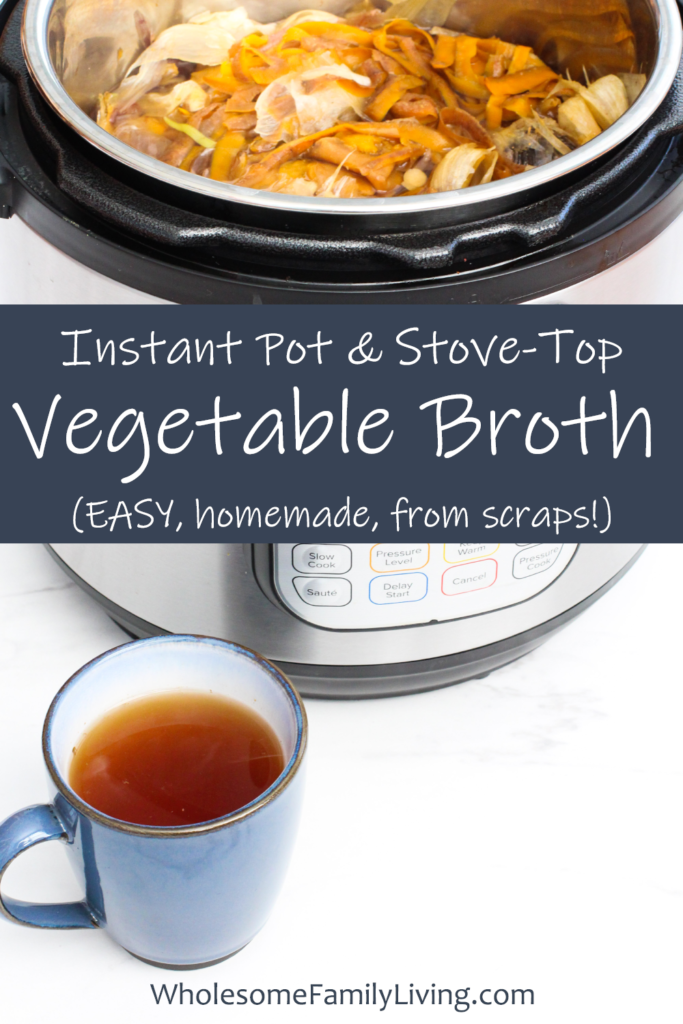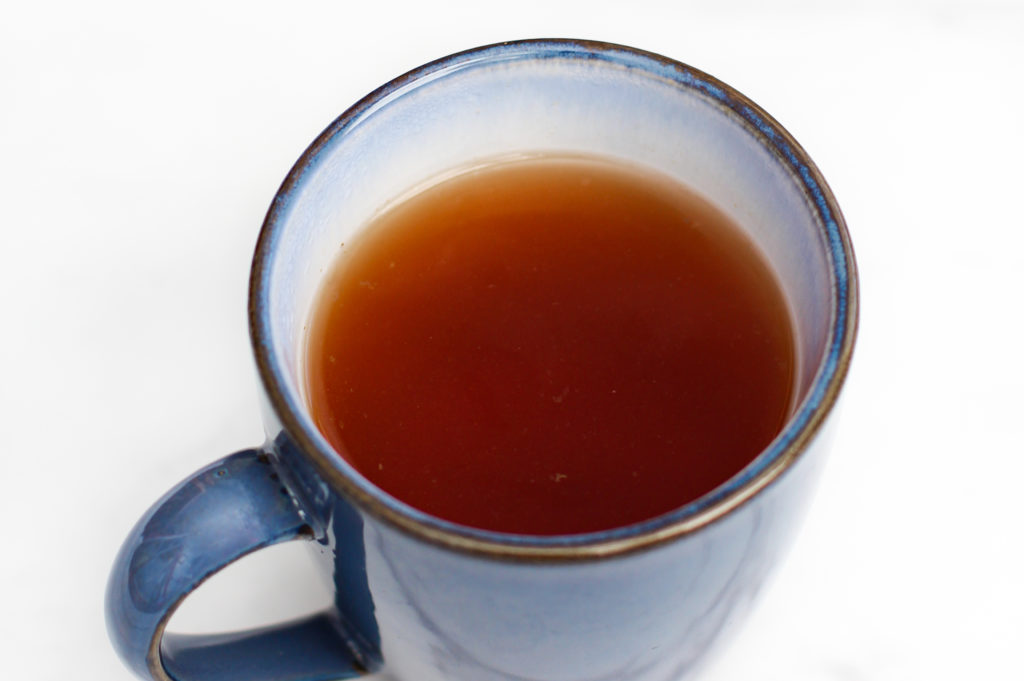Have you ever looked at all of your vegetable scraps and wondered if you could transform them into a homemade vegetable broth?
The answer is YES YOU CAN!
Using either your Instant Pot or just a pot on the stove, you can use your vegetable scraps to make rich homemade vegetable broth!
What I do is keep a gallon size freezer bag in my freezer, and as I generate appropriate broth worthy vegetable scraps (see below for suggestions of what scraps I keep), I add them to the bag until it is stuffed full.
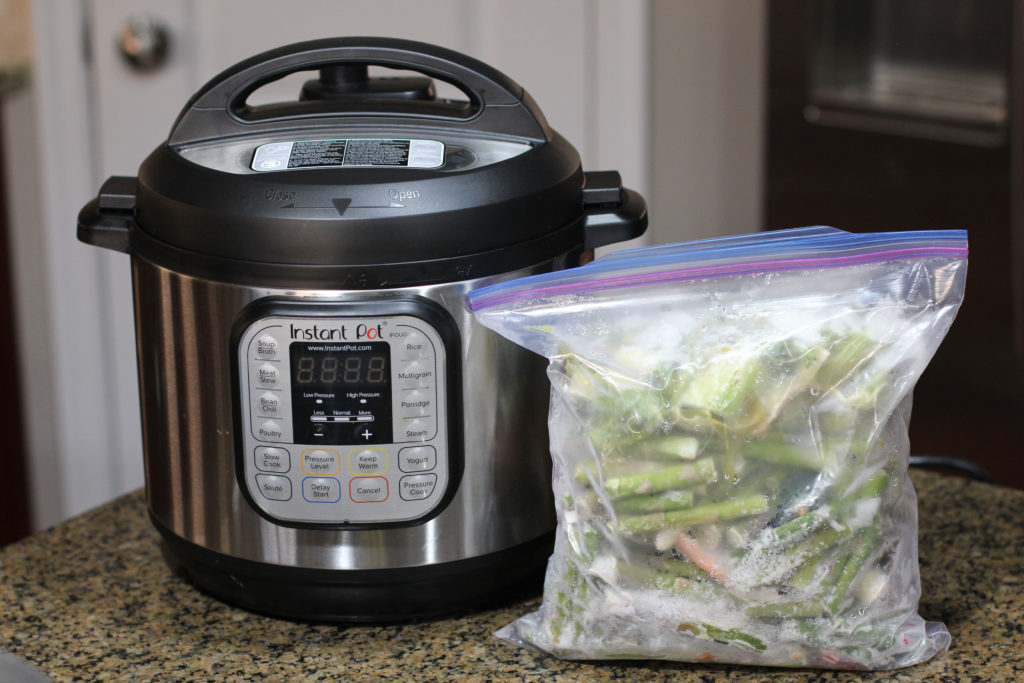
One full freezer bag is the perfect amount to make one Instant Pot of broth.
Not a weekend goes by where I don’t run an Instant Pot full of vegetables to make broth, and then instead of removing all of the broth from the Instant Pot, I turn it right around and use it as the base for cooking my chicken to make Instant Pot shredded chicken.
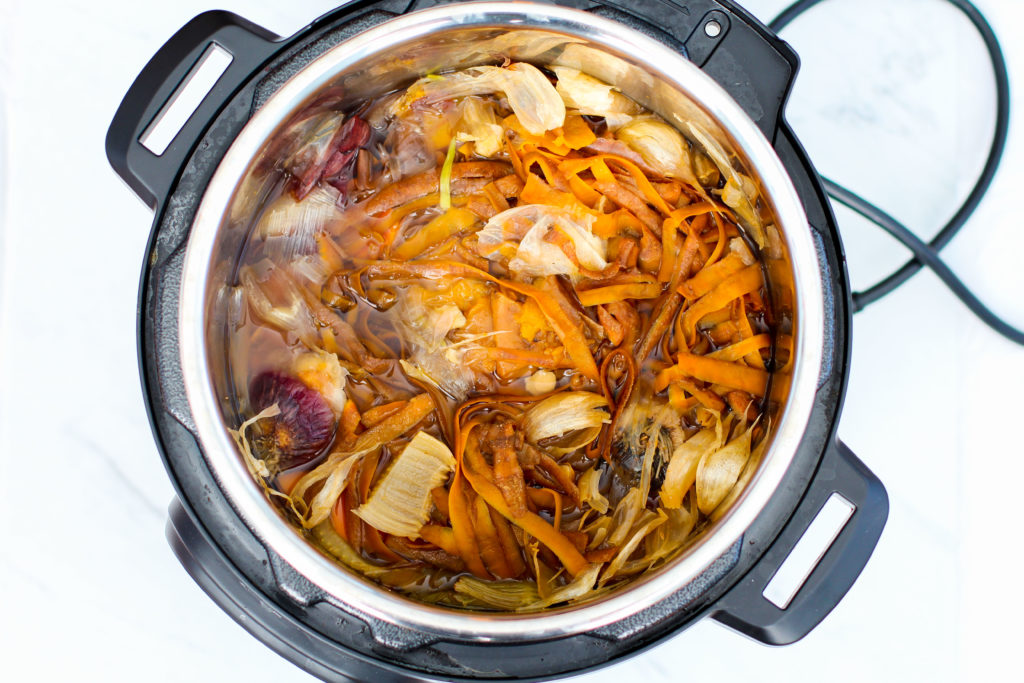
What Vegetable Scraps To Use When Making Homemade Vegetable Broth
Just about any scrap from a vegetable that you would normally cook is a great candidate.
For example, I wouldn’t keep the ends of a cucumber, but I would keep the ends of a zucchini.
Just be sure to wash off your vegetables before you peel them, otherwise your broth might turn out too “earthy”.
This happens when there is too much dirt still on your vegetables.
It’s also a good idea to scrub off your vegetables to minimize any chemicals that might linger on your vegetables.
And on that note, PLEASE USE ORGANIC!!
Broth can be so healing, but not if it comes with a side of pesticides!
So what specific vegetable scraps can you use?
Here’s a full list of what I have used before:
- Carrot tops and peels
- Celery ends and leaves
- Potato peels
- Beet peels
- Squash remains (including zucchini ends, butternut squash ends, etc.)
- Onion peels and ends
- Garlic peels and ends
- Asparagus ends
- Leek ends
- Green onion that is turning brown
- Broccoli leaves and stalk end
- Cauliflower leaves and stalk end
- Turnip ends and peels
- Parsnip ends and peels
And that’s not even an exhaustive list!
Really, any vegetable that you can cook can go in here!
The idea is to get a variety of vegetables in each gallon bag, that way your broth has more of a full bodied flavor instead of just tasting like carrot peel or something.
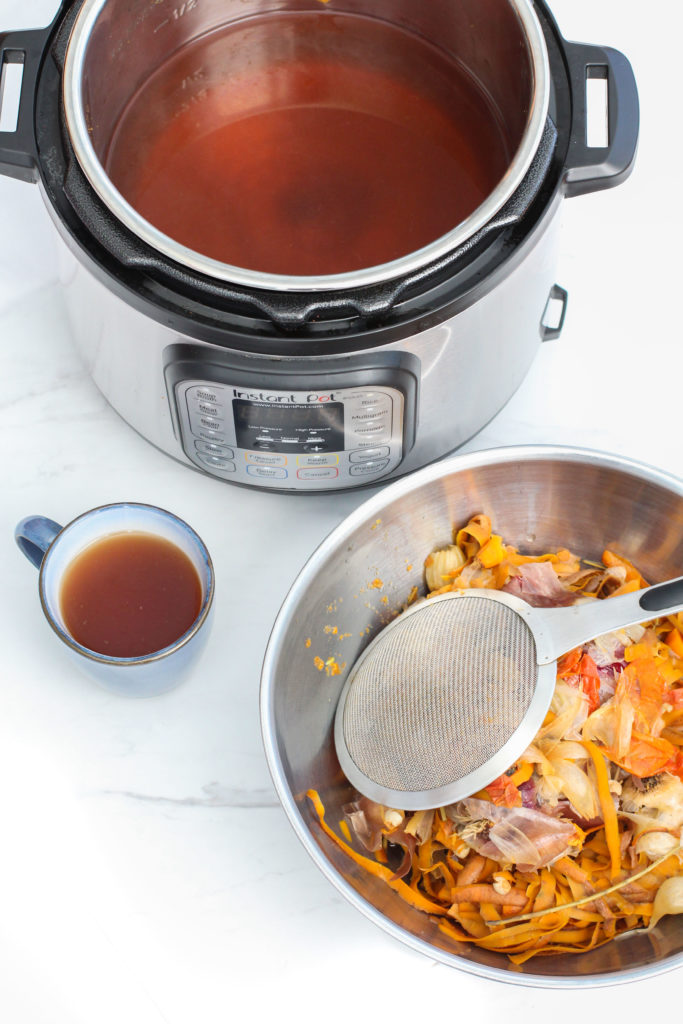
How To Store Homemade Vegetable Broth
To store my broth, I fill pint-sized Mason glass jars, leaving an inch at the top, and put them in the fridge for a day before putting them in the freezer.
I have had a few glass jars break in the freezer, and I believe it’s for one of two reasons. I either filled the jar too full or I put the jar in while it was hot and the temperature difference shocked the glass.
Either way, leave some head room at the top for expansion and let the jars cool completely before freezing them.
Alternatively, if you have access to a pressure canner, pressure canning homemade vegetable broth is another option! Check out full directions here!
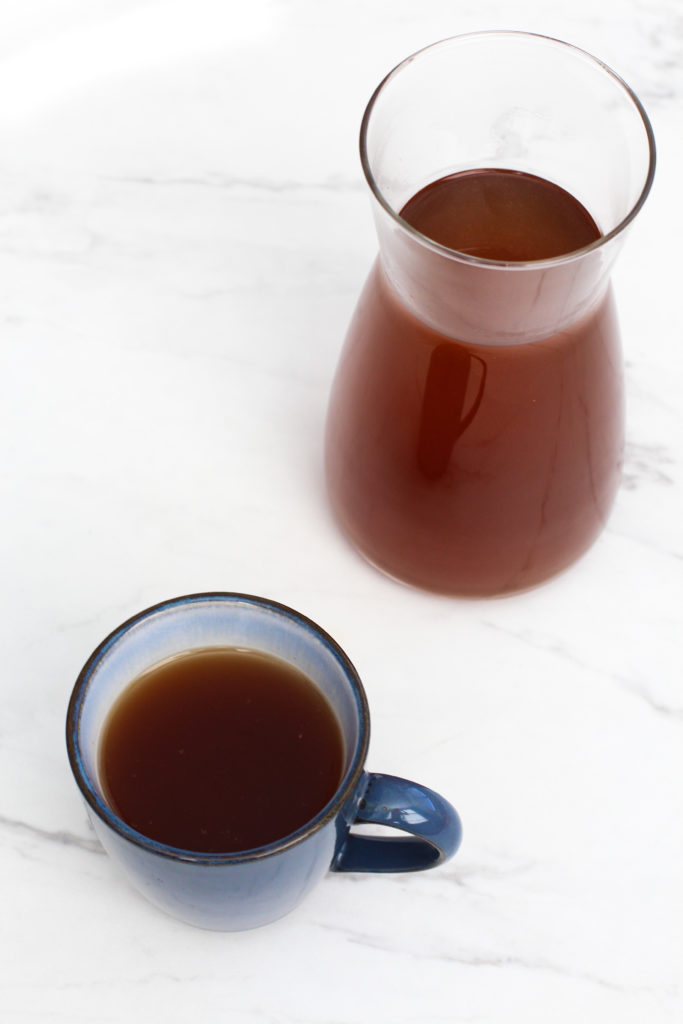
Homemade Vegetable Broth Recipe (Instant Pot and Stove Top Directions!)
Difficulty Level: Easy
Prep Time: 5 minutes
Cook Time: 30-60 minutes
Makes: about 8 cups depending on your ratio of scraps to water (4 pints for canning)
Ingredients:
- 1 full gallon size bag of vegetable scraps (or fill the Instant Pot to the Max Fill Line with loose scraps – do not press down)
- 1 teaspoon sea salt
- 2 bay leaves (optional)
- 2 cloves of garlic roughly chopped OR ¼ teaspoon garlic powder (if you don’t have garlic scraps in the bag)
- ¼ cup chopped onion OR ¼ teaspoon onion powder (if you don’t have onion scraps in the bag)
- Filtered or reverse osmosis water (about 8 cups)
- Other optional add-ins: herbs like rosemary or thyme – feel free to experiment!
Instant Pot Directions:
- Add the vegetable scraps to the Instant Pot and fill with water just below the Max Fill Line.
- Put the lid on and position the vent valve to the sealing position.
- Select Pressure Cook and set for 30 minutes OR select the Broth function if your Instant Pot has that function.
- After the pressure cook time has elapsed, allow it to naturally release the pressure for 5 minutes. Then, put a wet wash cloth over the vent valve (to reduce liquid spraying all over your kitchen) and turn the vent valve to quickly release the remaining pressure.
- Remove the lid and allow it to sit for a couple of minutes to let the steam dissipate before using a large fork or a fine mesh strainer to remove the vegetable scraps. At this point, the scraps can either be composted or thrown away.
- Use the broth immediately in another recipe (such as Instant Pot shredded chicken) or pour broth into containers and store in the fridge.
Stove Top Directions:
- Add the vegetable scraps to a large pot and fill with water, just until the scraps are covered. Don’t fill your pot more than 2/3 full, otherwise it might boil over!
- Put the lid on and turn the burner to high heat until the broth comes to a boil.
- Once the water is boiling, lower the heat so that the water stays lightly simmering. I recommend starting with medium heat and working up and down from there depending on how hot your stove top runs.
- Simmer for 30 minutes to an hour, depending on how much time you have. Near the end of the cook time, taste test the broth and adjust the seasoning to your liking.
- Remove the lid and allow the broth to sit for a couple of minutes, that way the steam can dissipate, and then use a large fork or a fine mesh strainer to remove the vegetable scraps. At this point, the scraps can either be composted or thrown away.
- Use the broth immediately in another recipe (such as Creamy Vegetable Soup) or pour broth into containers and store in the fridge.
Storage:
Homemade vegetable broth will keep in the fridge for up to two weeks.
To store the broth even longer, considering preserving in jars with a pressure canner or put in the freezer for up to 6 months for best quality (but you can really keep it in the freezer indefinitely!).
